Ear Mites
One of the most poorly understood and managed conditions in horses is itching of the head, ears and mane. You will hear a zillion so-called cures for these conditions, which means that no one treatment fixes all itches and it continues to be an extremely frustrating problem for horse owners.
Dentistry for Old Horses
One of the most rewarding and challenging parts of being an equine dental practitioner is being able to work on the mouths of geriatric horses, ie over 20 years old. These old timers are still poking around the farm for any one of a number of reasons - mostly positive. I love hearing the stories of what these horses have done and how they've contributed to happiness in so many peoples lives...
Performance Dentistry
Performance Dentistry is specifically. "Examination of the function, balance and symmetry of incisors and molar teeth, and treatment as necessary." To maintain optimum oral health and maximise comfort when the horse is masticating and bitted, it is required once or twice per year — throughout life. Obviously, this type of professional visit can form the basis of annual health checks for horses as occurs with humans and small animals...
Wolf Teeth in Horses
Wolf teeth are technically known as the first premolar teeth in horses. They usually erupt into the mouth at 5-12 months of age, but do NOT continue to grow or erupt into the mouth throughout life as do other cheek teeth. It has been estimated that approximately 70% of horses will develop wolf teeth...
Parrot Mouth in Horses
Parrot mouth has several other names and these include: brachygnathism, overshot maxilla, buck tooth, undershot jaw or overbite; when the top incisor teeth's front edge is further forward that that of the lower teeth. Obviously there are all different degrees of parrot mouth — minor through to severe. In minor cases, the upper and lower incisors still meet, but are not perfectly aligned, but in severe cases, the two do not meet at all...






















Equine Dentistry - Some Basic Anatomy and Physiology
Horse's teeth are known as hypsodont teeth - which means they have long crowns. These long crowns continue to be worn down, with the horse chewing approximately 60 chews per…
More